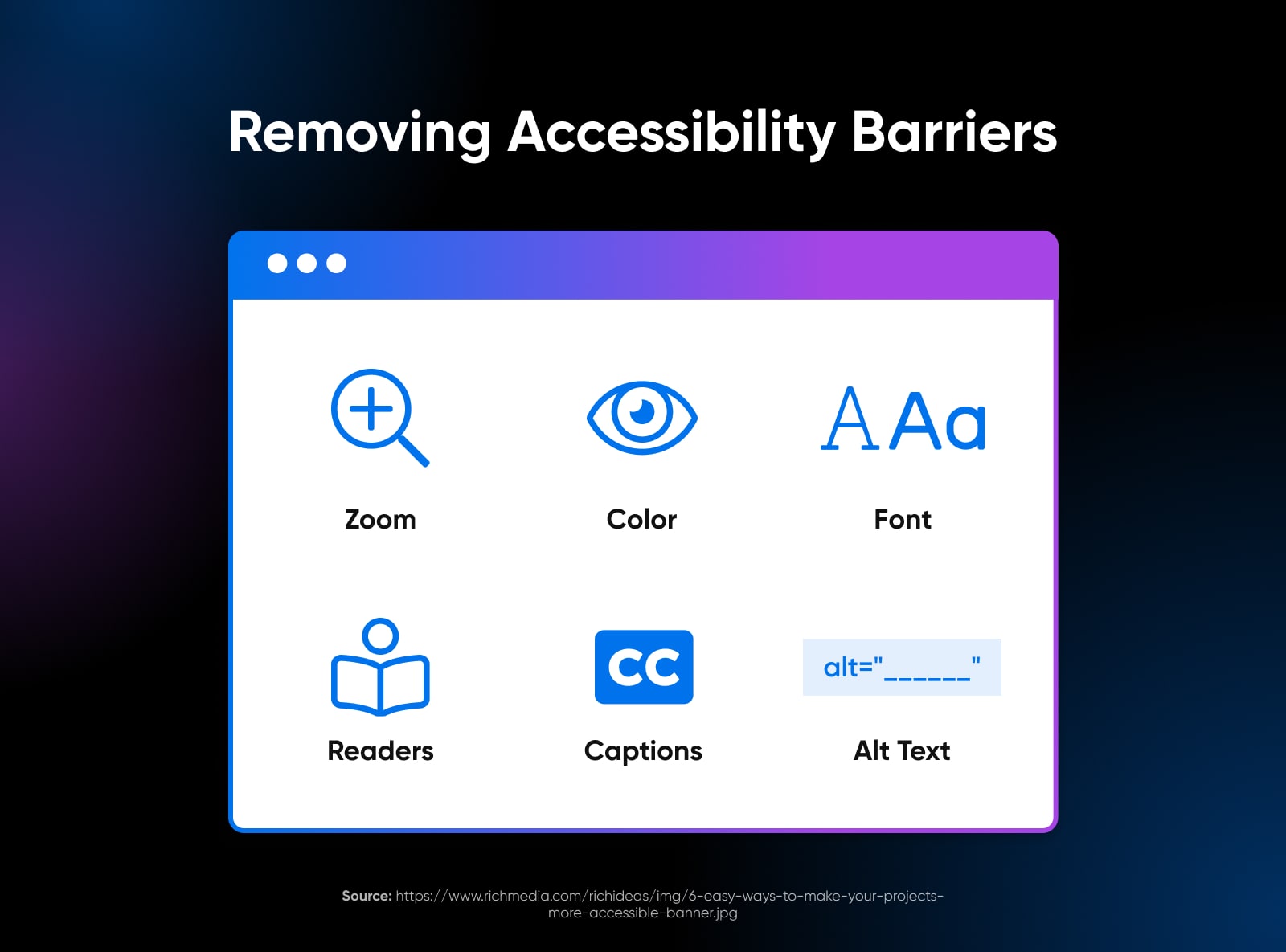News Blast: Your Daily Update
Stay informed with the latest news and trends.
Web Accessibility: Making Sure Everyone Gets a Seat at the Digital Table
Unlock the web for all! Discover essential tips to ensure everyone has a seat at the digital table with web accessibility.
Understanding Web Accessibility: A Comprehensive Guide for Everyone
Understanding web accessibility is crucial for creating an inclusive online environment. It ensures that all users, regardless of their abilities or disabilities, can access, navigate, and interact with websites effectively. This guide covers the core principles of web accessibility, promoting a better user experience for everyone. By adhering to established guidelines such as the Web Content Accessibility Guidelines (WCAG), content creators can ensure that their websites are usable for individuals with visual, auditory, motor, and cognitive disabilities.
To implement web accessibility, consider these essential strategies:
- Use semantic HTML: Properly structure content using elements like headings, lists, and tables.
- Provide text alternatives: Ensure that images and non-text content have descriptive alt text.
- Incorporate keyboard navigation: Design your website so that users can navigate using only a keyboard.
- Ensure sufficient contrast: Employ high-contrast color schemes to enhance readability for individuals with visual impairments.
By prioritizing accessibility, you not only comply with legal standards but also improve overall site usability and reach a wider audience.

Why Web Accessibility Matters: The Importance of Inclusive Design
Web accessibility is crucial in ensuring that all individuals, regardless of their abilities or disabilities, can navigate, understand, and interact with the digital world. By adopting an inclusive design approach, organizations not only comply with legal standards but also enhance user experience for a broader audience. This design philosophy recognizes diverse needs, allowing users with visual, auditory, motor, or cognitive impairments to access information and services effectively. An accessible website is not just a nice-to-have; it’s a fundamental requirement that fosters equal opportunity in the digital landscape.
Moreover, accessible web design can significantly benefit businesses. When websites are designed with inclusivity in mind, they invite a diverse user base and increase overall reach. It’s estimated that over 1 billion people worldwide live with some form of disability. By prioritizing web accessibility, companies can tap into this vast market, create loyalty among customers, and enhance their brand reputation. In a world increasingly dependent on technology, the focus on inclusive design will not only meet ethical imperatives but also drive business growth and innovation.
Common Myths About Web Accessibility Debunked
The notion that web accessibility is only about compliance with legal standards is a common myth. While adhering to regulations such as the Americans with Disabilities Act (ADA) is important, the primary goal of accessibility is to create an inclusive digital environment for all users. This involves ensuring that individuals with disabilities can easily navigate, understand, and interact with online content. By focusing solely on compliance, many organizations overlook the broader benefits of accessibility, such as enhancing user experience and improving site usability for everyone, not just those with disabilities.
Another prevalent misconception is that making a website accessible is a complex and costly process. In reality, many web accessibility best practices can be integrated into the design and development phases without incurring significant additional costs. Simple adjustments like using proper semantic HTML, providing alternative text for images, and ensuring keyboard navigability can enhance accessibility without extensive resources. Moreover, the increasing awareness and tools available today have made it easier for developers to incorporate accessibility from the start, making it an integral part of web development rather than an afterthought.